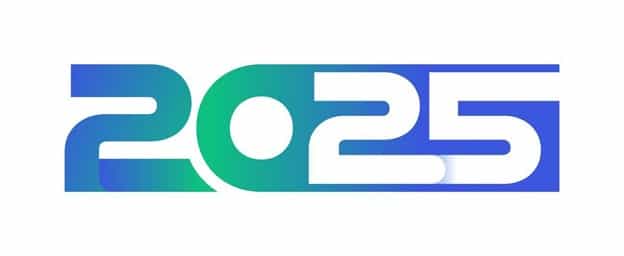
- customer experience
- customer service
- fsm
The Evolution of Service: A Rolls-Royce Perspective on Outcome-Based Business Models
Speakers: John Carroll of the Service Council and Yann Linsner of Rolls-Royce
Key Takeaways:
During this session, John Carroll and Yann Linsner discussed the innovative outcome-based business model of Rolls-Royce and its evolution over the past 60 years.
- The power-by-the-hour model of Rolls-Royce transformed the service into a long-term relationship where both parties share the risk.
- The shift to outcome-based service models enables companies to align customer objectives with service delivery, thereby generating enduring value.
- The primary challenges in implementing outcome-based services are managing high-value assets and variable cash flow, which necessitate innovative solutions.
- Technicians can provide more proactive and efficient service with the help of data and technology, such as digital twins and AR.
- The key to successful adaptation to new service models and employee engagement is effective change management strategies.
From Time-and-Material to Long-Term Relationships
The transformation of Rolls-Royce into an outcome-based service model, rather than a traditional transactional business model, was a revolutionary move that transformed the company and the service industry as a whole. Rolls-Royce pioneered the power-by-the-hour business model in the 1960s, where the company’s profitability was directly related to the reliability and uptime of the engines it serviced. Rather than charging customers by parts and labour, Rolls-Royce started charging customers by the number of hours their engines operated. This established a long-term customer relationship, with contracts ranging from 10 to 20 years, and even a recent 27-year contract.
The Problem with the Old Model
Before this change, Rolls-Royce was using a time-and-material model that was profitable but limited. Linsner stated that this conventional method presented a dilemma between profit margins and actual customer needs. In most instances, it was about selling parts and services without looking at the entire lifecycle or value of the engine. When competition entered the market, Rolls-Royce recognized that the transactional model was unable to sustain long-term relationships.
The “Power by the Hour” Solution
The power-by-the-hour model, which was introduced in 1962, was revolutionary. The model enabled Rolls-Royce to establish long-term service relationships with customers, which matched their revenue with the performance and uptime of the engine. This model mitigates the risk to the customer’s business, as it offers services throughout the product’s life cycle, including production and years of operation. With the provision of constant monitoring, preventive maintenance, and proactive service, Rolls-Royce helps customers prevent unexpected breakdowns, providing them with peace of mind and ensuring higher operational efficiency.
The power-by-the-hour business model demonstrated how outcome-based service models can help align the interests of both the service provider and the customer, resulting in a mutually beneficial scenario.
Overcoming Financial and Operational Hurdles
The shift to an outcome-based model was a significant financial and operational challenge. Rolls-Royce needed to devise ways of dealing with the complexities of servicing high-value, capital-intensive assets, such as jet engines.
Capital-Intensive Programs
High-value asset outcome-based services demand a significant investment in spare parts, backup engines, and other inventory. Rolls-Royce developed a system to ensure a steady supply of replacement parts throughout the product’s lifecycle, guaranteeing sufficient parts supply and maintenance.
The Cash Flow Dilemma
One of the major issues was controlling the peaks and valleys of cash flow. Whereas Rolls-Royce made money on a per-flight-hour basis, significant maintenance incidents, including overhauls, might cost tens of millions of dollars. These significant repairs posed cash flow challenges.
Hybrid Models and Risk Transfer
To mitigate cash flow issues, Rolls-Royce introduced hybrid models that facilitated a gradual transition to outcome-based services. These models had fixed prices for major repairs, which facilitated easier financial planning for both Rolls-Royce and its customers.
The change management approach to these transitions involved introducing hybrid models that balanced risk transfer and the predictability of costs, making the adoption of the outcome-based service model smoother.
The Pivotal Role of Data and Technology
According to Linsner, technology and data are key to the successful implementation of Rolls-Royce’s outcome-based service model. Technology does not replace people, but it empowers them to deliver better service.
The Digital Twin
The digital twin, a virtual replica of every engine constantly updated with live data, was one of the most significant innovations introduced by Rolls-Royce. This enables Rolls-Royce to anticipate maintenance requirements, identify trends, and provide predictive maintenance—minimizing downtime and maximizing operational efficiency.
Smart Tools and AR
Another tool employed by Rolls-Royce is the intelligent borescope, which automates the process of detecting defects and eliminates the need for multiple inspectors. This innovation saves on maintenance expenses and avoids unnecessary repairs. The company also uses augmented reality (AR) and e-learning to educate technicians and offer remote assistance.
Data Is a Two-Way Street
The information presented by these tools is invaluable, and any issues with data transfer are promptly identified. When an asset ceases to transmit data, it is immediately detected as a problem, and a ticket is automatically created for follow-up.
The combination of data-driven and outcome-based service models enables Rolls-Royce to deliver continuous improvements, predictive services, and more efficient operations.
Managing People and Change
The human factor is equally important as the technology that Rolls-Royce used to transform into an outcome-based business model. Rolls-Royce has adopted a culture of collaboration and employee empowerment to ensure that these new strategies are implemented successfully.
Change Management through Collaboration
Rolls-Royce encourages cross-functional cooperation, which facilitates the seamless transfer of knowledge through the exchange of best practices and lessons learned. Whether it involves Defence, Civil Aerospace, or Power Systems, company divisions constantly share knowledge to enhance service delivery.
Change management best practices are essential when transitioning to outcome-based business models. Here is how you can make that transition smoother for everyone:
- Talk to Your Team: Be honest about why the changes are occurring and how they will improve the situation of everyone—the company and individual roles.
- Collaborate: Have various teams communicate and exchange ideas. It is all about getting all the goals aligned to make the new model work across the board.
- Continue Learning: Continuous training is important. Employees are better prepared to change when they can acquire new skills and become familiar with new technology.
- Engage Your People: Include employees in the discussion. Request their feedback, hear their concerns, and allow them to own the changes.
By guiding your team through these changes, you will assist them in adjusting with confidence and make the new processes work to the advantage of all.
Employee Development and Engagement
Rolls-Royce places a strong emphasis on career development and training. With technology freeing up the time of technicians, they are now able to develop their skills, collaborate with engineers, and enhance serviceability.
Empowering the Workforce
Linsner pointed out that technology enables employees to deliver superior results to customers. Through the integration of technology and human skills, Rolls-Royce creates a more fulfilling workplace for its employees.
Best practices in change management are essential for adapting to outcome-based business models. Employees who are supported and empowered by their technology can make a tangible difference in the delivery of services.
Conclusion: The Future of Outcome-Based Service Models
The development of Rolls-Royce’s service model illustrates how businesses can transition to an outcome-based service model, founded on long-term relationships, technology, and collaboration, rather than a traditional transactional business model. Rolls-Royce has developed a service model that benefits both the company and its customers by aligning their profit with the reliability and uptime of their engines.
At Praxedo, we understand that purpose and technology are the two drivers of service excellence. Our Field Service Management (FSM) solution enables companies to adopt outcome-based service models, allowing them to establish lasting relationships with their customers.
FAQs:
1: What is Rolls-Royce’s “power by the hour” model?
The Rolls-Royce’s power-by-the-hour business model was introduced in 1962, and it bases its profit on engine reliability and uptime. Rolls-Royce does not charge customers for parts and labour, but rather earns money depending on the hours the engine is running. This establishes a long-term service relationship with customers, and the interests of both parties are aligned in ensuring the engine’s performance.
2: What challenges does Rolls-Royce face with its outcome-based service model?
Some of the challenges that Rolls-Royce grapples with include the capital-intensive nature of high-value assets, such as jet engines, and the cash flow dilemmas that arise from expensive maintenance events. To address these concerns, Rolls-Royce has implemented hybrid models and shifted part of the financial risk to customers, providing fixed-price repairs as it transitions to outcome-based services.
3: How does Rolls-Royce use technology in its service model?
Rolls-Royce has an outcome-based service model that involves technology. The company uses digital twins to develop a virtual model of every engine, enabling the prediction of maintenance requirements. Other smart tools employed by Rolls-Royce include the smart borescope, which is an automated defect recognition tool, and the use of augmented reality (AR) to train technicians and provide remote assistance, making the service more efficient and proactive.
4: What are the key change management best practices Rolls-Royce employs?
Rolls-Royce’s change management strategy is based on effective communication, where employees are engaged in the change process, provided with continuous training, and encouraged to collaborate across divisions.
Our similar articles.
-
- fsm
- AI in field service management
- Pool service technicians
Maximize Productivity With Pool Service Scheduling Software
August 29, 2025 -
- Field Service Management
- top trends
- fsm
- field service trends
Looking Ahead to 2025: FSM
December 18, 2024 -
- Technologies
- fsm
- innovation
- field service technologies
- Implementation
5 Considerations for a Successful Tech Implementation
April 3, 2025





